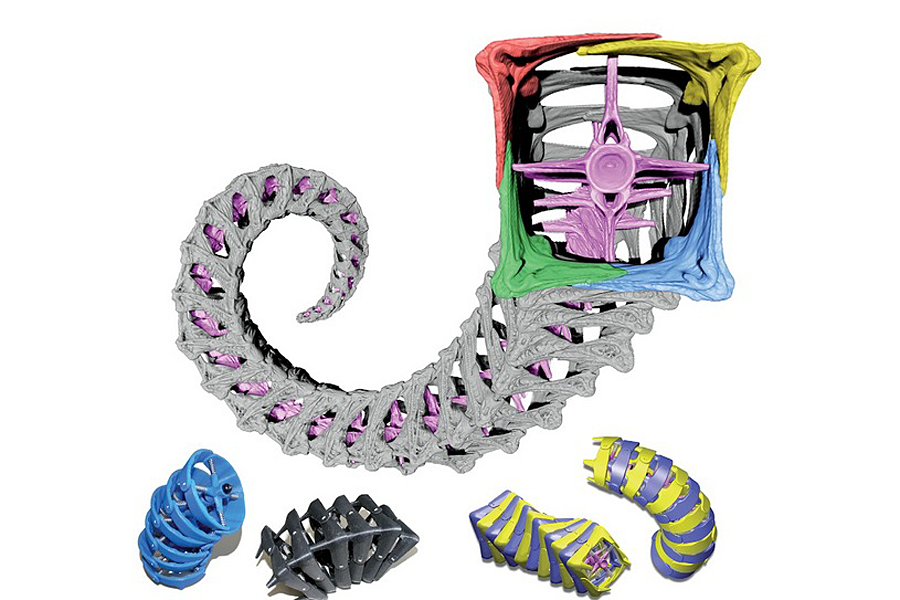How a seahorse tail can help scientists build a better robot
Loading...
Slinky snake robots could get a better grip when climbing, thanks to new research on how a seahorse's tail works, according to a new study.
Seahorses are of special interest to robot researchers because of their unusual skeletal structure, which scientists say could help them design bots that are hardy and strong yet also flexible enough to carry out tasks in real-world settings.
"Human engineers tend to build things that are stiff so they can be controlled easily," study co-author Ross Hatton, an assistant professor in the College of Engineering at Oregon State University, said in a statement. "But nature makes things just strong enough not to break, and then flexible enough to do a wide range of tasks. That's why we can learn a lot from animals that will inspire the next generations of robotics." [The 6 Strangest Robots Ever Created]
In particular, seahorses have square (rather than round) bony plates that surround the "backbone" of their tails. These odd features help the fishes bend, twist and get a stronger grip on their surroundings. But, the square structures also make them more resistant to being crushed by predators, the researchers said.
Researchers today are concerned about how to make "hard" (mechanical) robots safe when working around "soft" humans, such as when a robot assists with surgery or hands off a tool to a factory worker. By mapping out the seahorse's tail using 3D printing, some new ideas may emerge, Hatton said.
The researchers found that the structure of the tails provide "adequate dexterity and a tough resistance to predators, but also that it tends to snap naturally back into place once it's been twisted and deformed," Hatton said in a statement. "This could be very useful for robotics applications that need to be strong, but also energy-efficient and able to bend and twist in tight spaces."
The researchers printed out a simple 3D model of a seahorse's tail and put it through several punishing tests. Twisting the tail showed that the square plates stopped the tail from crushing too far. Compressing it was difficult because the seahorse has joints just at the spots where a typical solid structure would cave in — making them resistant against water birds, their main predator.
"It's a good opportunity, outside the simulations, to physically demonstrate how the tail works," Hatton said.
The new study could also inspire more effective designs for soft-bodied robots, the researchers said. For example, snake-inspired bots move using a silicone balloon that has different inflatable sections. Much like how a person lifts and lowers a leg to walk, these robots inflate and deflate balloon parts to wiggle along. But in the real world, Hatton said, the robot's body is vulnerable to cutting and abrasion.
"The seahorse tail gives us an idea of how we might add armor on to these," he told Live Science, specifically because the tail has a mix of hard and soft sections.
The study was led by Michael Porter, an assistant mechanical engineering professor at Clemson University in South Carolina. Detailed findings were published online today (July 2) in the journal Science.
Follow Live Science @livescience, Facebook & Google+. Original article on Live Science.
- Super-Intelligent Machines: 7 Robotic Futures
- Biomimicry: 7 Clever Technologies Inspired by Nature
- The 10 Weirdest Things Created By 3D Printing
Copyright 2015 LiveScience, a Purch company. All rights reserved. This material may not be published, broadcast, rewritten or redistributed.





